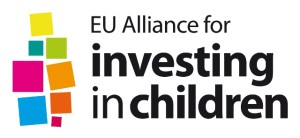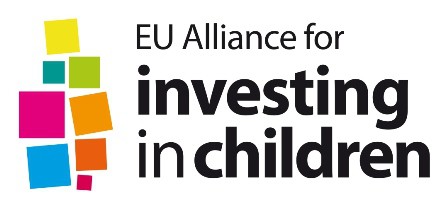Statement of the EU Alliance for Investing in Children on the Europe 2020 Integrated Guidelines COM (2015) 98 & 99
In October 2014, the EU Alliance for Investing in Children, which brings together 24 European networks sharing a commitment to end child poverty and to promote children’s rights and child well-being, responded to the public consultation on the Europe 2020 Strategy. In its respon se, the EU Alliance argued that the Europe 2020 strategy is potentially the main tool to realise the European Commission Recommendation Investing in Children – Breaking the Cycle of Disadvantage. The Recommendation is a commitment endorsed by Member States calling for concerted efforts to end child poverty and promote child well-being across Europe.
se, the EU Alliance argued that the Europe 2020 strategy is potentially the main tool to realise the European Commission Recommendation Investing in Children – Breaking the Cycle of Disadvantage. The Recommendation is a commitment endorsed by Member States calling for concerted efforts to end child poverty and promote child well-being across Europe.
Following the publication of the new Europe 2020 Integrated Guidelines on 2 March 2015, we want to highlight our concern and reiterate our messages.
Specific child poverty targets
European and national (sub-) targets should be set for the reduction of child poverty and social exclusion, specifically as part of the Europe 2020 target on poverty reduction.
Recent reports show that children and young people are the most at risk of poverty in the European Union(iii) . Not only have poverty levels increased in the past years, but inequality gaps in Europe have widened. It is particularly worrying that besides the factor of employability, children and young people are no longer recognised as a policy and investment priority.
Comprehensive frameworks for inclusive growth
Investing in children needs to be comprehensively addressed across sectors (employment, financial, social services, education, health, housing and fundamental rights, etc). Only then will interventions and investments lead to a sustainable and inclusive exit from the crisis and prevent youth unemployment.
The Integrated Guidelines are shifting Europe 2020 away from being a strategy for smart, sustainable and inclusive growth, to – in line with the Investment Plan(iv) – one for “jobs, growth and investment”. Both Europe 2020 and the Investing in Children Recommendation are comprehensive frameworks owned by the EU, but some key elements have been completely neglected in the new Integrated Guidelines, such as social protection and prevention to break the cycle of disadvantage.
Guidelines for stakeholder engagement
The European Commission should develop, as it had committed, a set of guidelines for the engagement of stakeholders in Europe 2020, under the new framework.
The summarised result of the public consultation(v) acknowledged that ownership of the Europe 2020 strategy was limited and stakeholder involvement lacking. The role of civil society, including children’s rights organisations, in ensuring EU policy coherence remains to be recognised in practice.
We are struck by the narrow vision of the Integrated Guidelines and its transformation of the strategy into a soft-spoken echo of the Investment Plan. Such an approach ignores the need for social investment and complementarity between structural reforms. It is short-sighted and ill-fated.
– end
Download here this statement.
